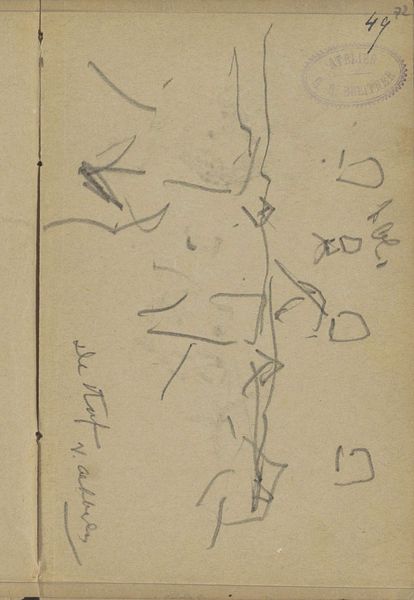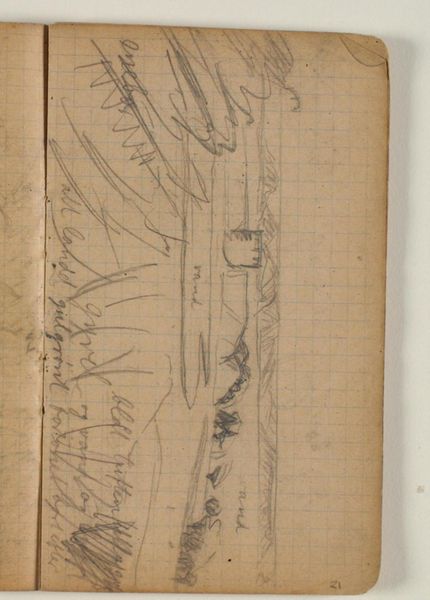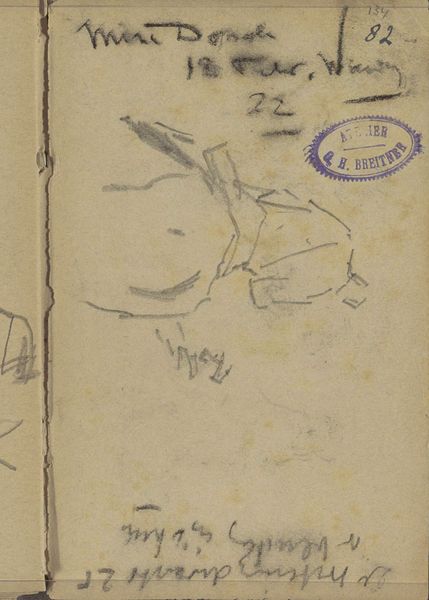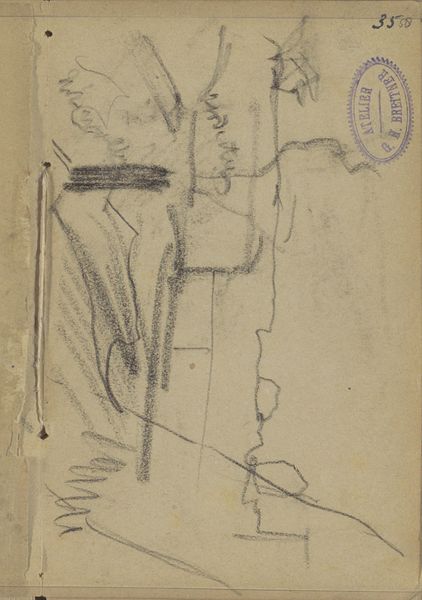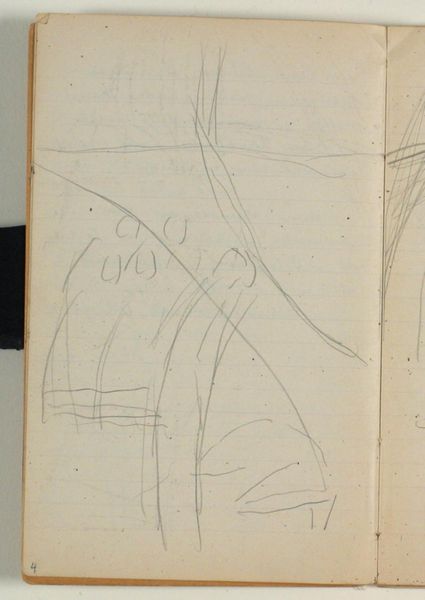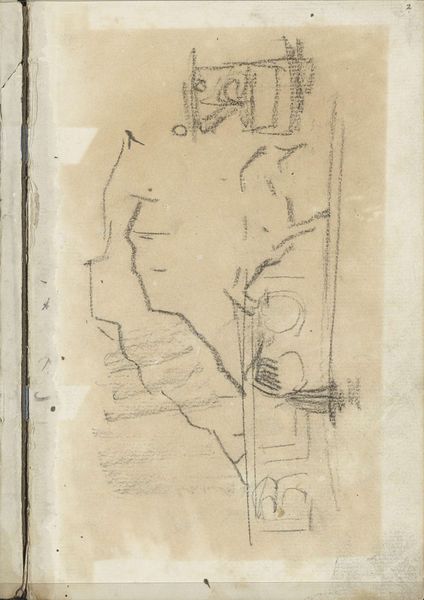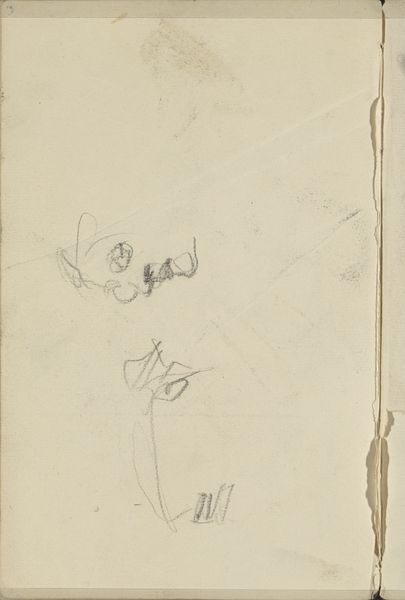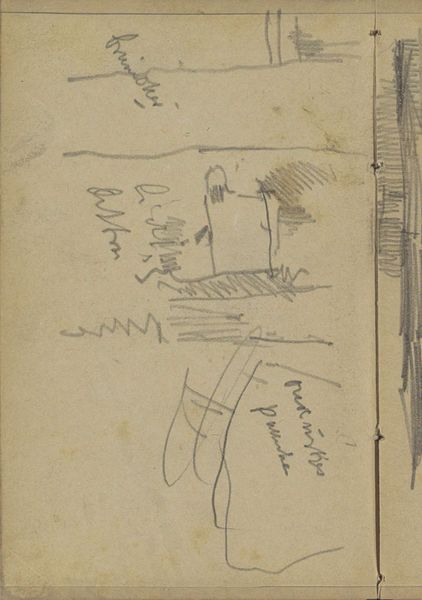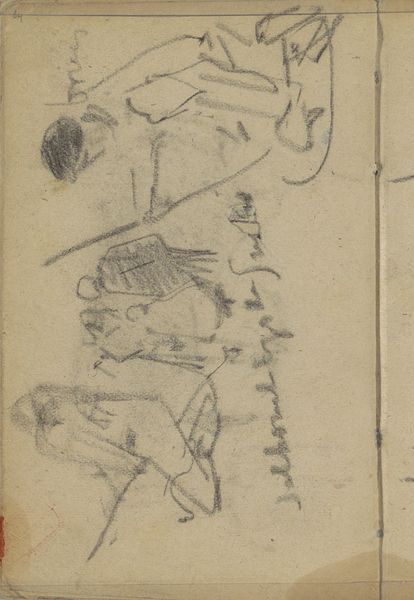![Aufsicht auf eine Straßenkreuzung (Top View on a crossing) [p. 47] by Max Beckmann](/_next/image?url=https%3A%2F%2Fd2w8kbdekdi1gv.cloudfront.net%2FeyJidWNrZXQiOiAiYXJ0ZXJhLWltYWdlcy1idWNrZXQiLCAia2V5IjogImFydHdvcmtzLzQ1NzRhNjVlLTVkOTQtNGNkOS04NmU2LWU5YTEzYzViZDI4My80NTc0YTY1ZS01ZDk0LTRjZDktODZlNi1lOWExM2M1YmQyODNfZnVsbC5qcGciLCAiZWRpdHMiOiB7InJlc2l6ZSI6IHsid2lkdGgiOiAxOTIwLCAiaGVpZ2h0IjogMTkyMCwgImZpdCI6ICJpbnNpZGUifX19&w=828&q=75)
Aufsicht auf eine Straßenkreuzung (Top View on a crossing) [p. 47]
0:00
0:00
drawing, graphite
#
drawing
#
ink drawing
#
expressionism
#
graphite
#
cityscape
Dimensions: page size: 16.3 x 10 cm (6 7/16 x 3 15/16 in.)
Copyright: National Gallery of Art: CC0 1.0
Curator: What strikes me most immediately is how sparse and suggestive this image is. It's as if Beckmann is tracing the very blueprint of urban experience itself. Editor: Yes, and we're looking at a graphite and ink drawing titled "Aufsicht auf eine Strassenkreuzung," or "Top View on a Crossing," attributed to Max Beckmann. Though undated, its style points toward the Expressionist leanings that characterized much of his work. The scene appears to capture an intersection, as if observed from above, revealing a network of roads and structures in minimal detail. It almost feels unfinished, like a fleeting thought captured on paper. Curator: That "unfinished" quality is precisely what holds so much potential. It mirrors how memory functions, highlighting the essential, omitting what the mind deems less crucial. This cityscape is stripped down to its barest symbolic elements. What is visible reflects more of a psychological map than a geographical one, wouldn't you agree? Editor: Absolutely! I can almost hear the city. Even with such minimal linework, you sense the potential for chaos—the energy, but also the alienation that defines modern urban life. Beckmann zeroes in on something universal, a shared tension within these spaces. The roads themselves could almost symbolize arteries, pumping life, but also potentially leading to a point of collision or fracture. Curator: Look closely and one might even decipher archetypal forms, repeated to emphasize recurring human activities and paths. There's the hint of encoded language, architectural patterns representing broader narratives, maybe societal power dynamics, playing out within cityscapes. Each viewer inevitably brings a personal reading influenced by their experience of such places. Editor: It really becomes an invitation to project your own story onto its skeleton. In that sense, Beckmann avoids prescribing a specific meaning, he lets us construct one ourselves. What lingers for me, though, is this strange detachment. This perspective somehow takes the "human" right out of the space, leaving only its bones. It is as though we are present, witnessing it, but somehow ghostly in our remove. Curator: That feeling resonates. It suggests themes relevant across epochs—estrangement and anonymity. His choices around depicting familiar forms allow a timeless reflection. A lot to think about from one page of a sketchbook. Editor: Indeed, more than meets the eye in this preliminary drawing. I leave feeling very different from how I would after navigating this very space, had I been down at street level with everyone else.
Comments
No comments
Be the first to comment and join the conversation on the ultimate creative platform.
